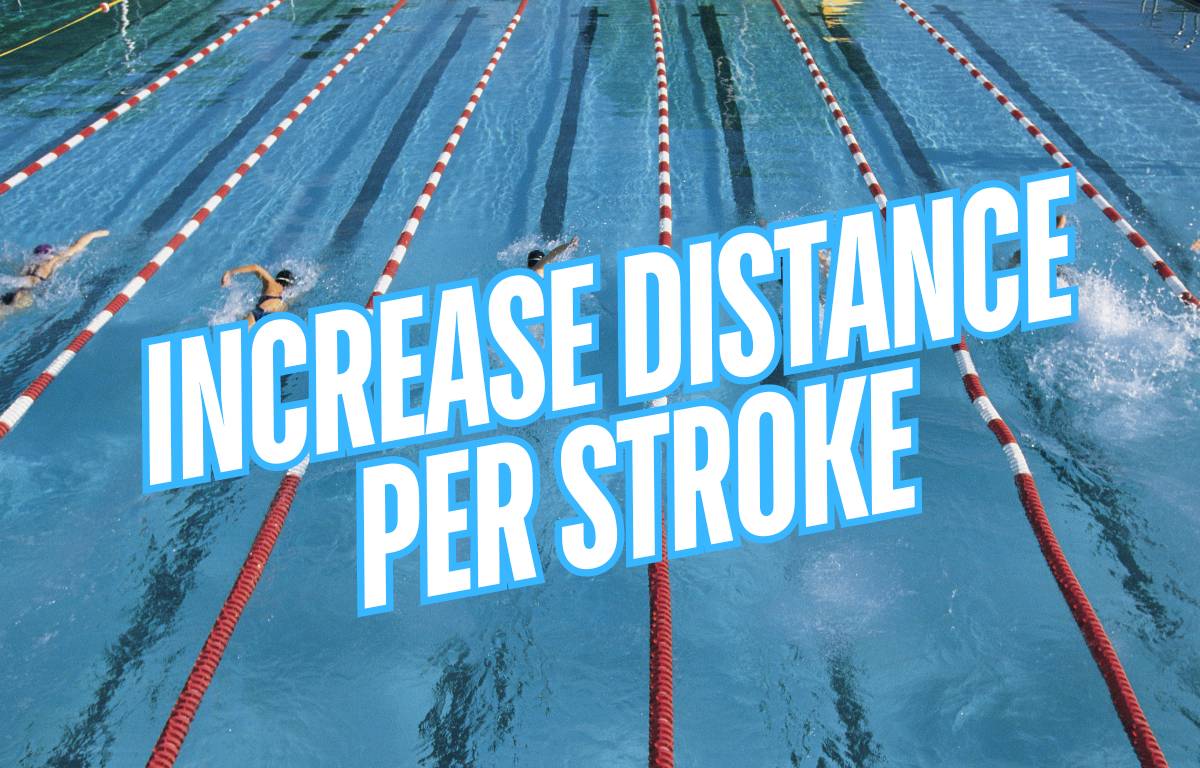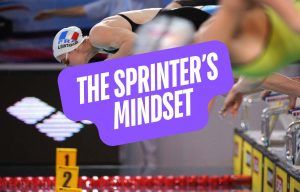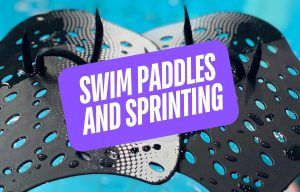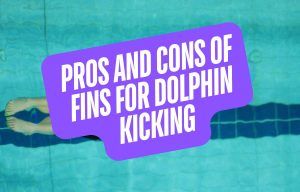Ready to get more efficient in the water and increase distance per stroke? Here are some proven tips for increase stroke length with your swimming.
The fastest swimmers at all distances, from the sprint kings to the distance titans, all share a good feel for the water and possess excellent distance per stroke.
They’ve struck a balance between power and efficiency that has rocketed them to the top echelons of their respective disciplines.
While we aren’t all cut out to be Olympic gold medalists like Caeleb Dressel or Summer McIntosh, we can use the lessons of these top swimmers to make our swimming more efficient and, thereby, faster.
In this guide, we will look at some ways to improve distance per stroke, sample swim sets to try, and more.
Let’s dive in.
What is Distance per Stroke (DPS)?
Distance per stroke (DPS) measures how much distance swimmers cover with each stroke cycle.
It’s used to measure efficiency in the water as it tracks how far swimmers propel themselves with each swim stroke.
Factors that impact distance per stroke include not just the arm stroke and pulling motions, but how strong you kick, your technique, and your drag profile all playing a role in an efficient distance per stroke.
Fast swimmers have an efficient distance per stroke paired with an optimal stroke rate (how many strokes you take per minute), combining to create lots of speed in the pool.
How to Improve Distance Per Stroke
The best ways to boost distance per stroke for swimmers include:
- Incorporate freestyle drills
- Count your strokes
- Improve body position
- Work on feel for the water
- Resisted swimming
- Strengthen the kick
Next, we will look at each tip in more detail, offer some expert guidance and sets to put each into (swim) practice.
1. Counting your strokes is essential.
Making a habit of counting your strokes is the first and most essential step toward improving distance per stroke.
Knowing how many strokes you are taking and then setting targets for where you want to be are imperative.
Devices like swim watches, or even smart swimming goggles like the FORM 2 Smart Swim Goggles, can give swimmers detailed information on distance per stroke (frequently measured as part of a SWOLF score).
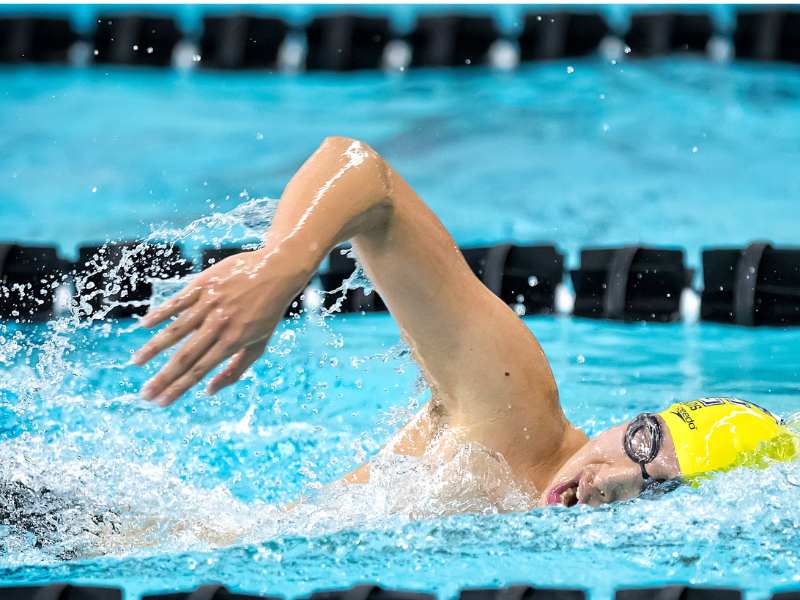
But every swimmer should start with the habit of counting their swim strokes.
Not only will this habit put you in a mindset oriented toward efficiency and improved distance per stroke, but counting your strokes will also keep you present during swim training, increase focus on technique, and sharpen those little details like a tighter streamline and crisp breakouts.
2. Improve body position.
The effects of drag and resistance are difficult to see when we are mid-stroke, but their effects are undeniable.
Water is nearly 800 times more dense than air, meaning that reducing drag is critical to improving speed and distance per stroke.
Imagine yourself trying to swim through a tight hole in the water, with your body in a straight line and at the water’s surface. When our head picks up, or our legs begin to sag, we subject our body to a ton of drag, forcing us to pull and kick harder, expending even more energy to blast through the water.
Optimal body position, including high hips, a neutral head position, and pulling and kicking “downhill” are crucial for getting the most distance per stroke cycle.
3. Improve your feel of the water.
Another key to improving your distance per stroke is to improve your feel for the water.
Having a better catch in the water and attaining a better feel” for the water where you are catching more of it during your pull will help you to take fewer strokes.
One of the best ways to improve your sensitivity to the water is sculling.
Sculling is a type of drill where swimmers make figure-eight hand movements in the water. Instead of doing a regular stroke, you do tight and quick hand motions, focusing on applying constant pressure with your palms and “catching” lots of water with the hands.
Sculling is a Swiss army knife for an improved feel for the water and, by extension, increases the distance per stroke.
You can do sculling in all areas of your stroke, from the catch to the pull to the exit. You can also do sculling on your front, back, and side, giving you tons of options no matter what your stroke or specialty is.
Tip: Add swim paddles to your sculling to increase water sensitivity and strengthen the forearms for a more powerful catch. The FINIS Agility Paddles, a strapless paddle that promotes constant palm pressure against the water, are perfect for sculling.
4. Resisted swimming
Resisted swimming, using familiar tools like resistance tubing (StretchCordz), DragSox, power towers, or swim tethers, is a way to increase power and improve distance per stroke.
The added challenge of overcoming increased resistance forces you to generate more force with each stroke and kick, eventually extending the distance you travel when swimming.
Another sneaky benefit of resisted swimming—in this case, with a drag chute—is increased “propulsive continuity.”
A study (Valkoumas et al., 2023) published in Sports Biomechanics found that an 11-week resisted swim training intervention with a swim parachute increased the duration of the propulsive phases in competitive swimmers.
Non-propulsive phases such as the recovery and entry also decreased, leading to faster and more balanced strokes.
Implementing resisted swim training is great for improving the body line in the water, increasing core activation, a stronger catch, more time in propulsive phases, and increased distance with each stroke cycle.
Tip: Focus on doing short distances with high intensity and lots of rest to maintain peak power. For example: 8x15m freestyle fast with drag chute on 1:30
5. Stronger kick
A more powerful kick can help you to increase the amount of water you cover with each stroke cycle.
A strong kick is important for a lot of reasons, including setting up a more powerful pull, stable body position, and yes, propulsion.
Studies with competitive swimmers have shown the kick to be responsible for approximately 10-30% of overall swimming velocity (Morouço et al., 2015; Deschodt et al., 1999).
The added thrust generates increased forward momentum, complimenting the arms and boosting distance per stroke. A smooth, steady kick reduces posture misalignment and helps to keep the body properly balanced.
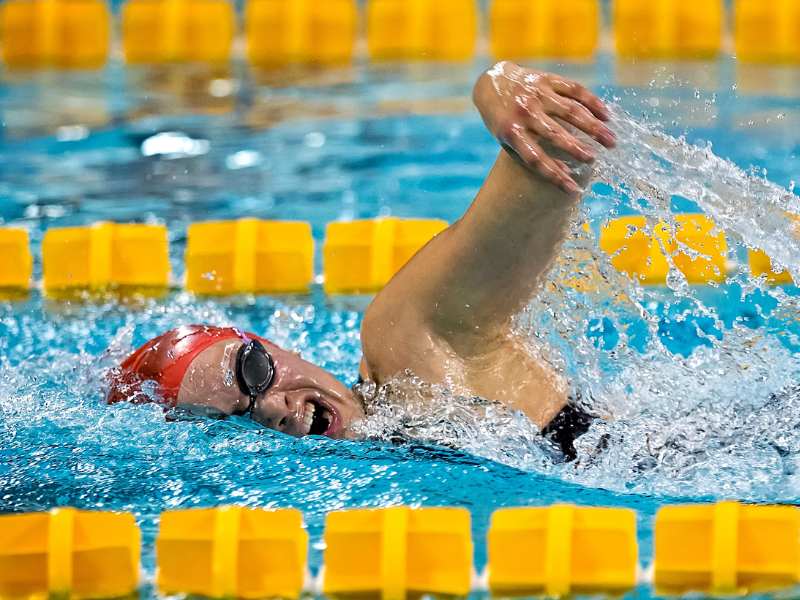
A turbocharged kick also helps you maintain stroke length when tired or fatigued, when the natural instinct is for the arms to start to “T-rex” into a cramped and shortened stroke cycle.
To boost your kick, add bouts of resisted kicking (with DragSox or resistance tubing), practice on mastering a 4- and 6-beat freestyle kick, and log more focused, high-quality meters kicking with your favorite kickboard.
6. Incorporate drills
There are lots of excellent freestyle drills that are perfect for improving distance per stroke.
Some of my favorites include:
Long Dog Freestyle Drill
Long Dog is a killer drill for building a stronger catch and by extension, getting more length from your freestyle stroke.
Long Dog is like doggie paddle, but swimmers perform a full underwater arm recovery.
This type of recovery helps swimmers set a stronger catch and pull through more aggressively, increasing stroke distance.
Overkick Drill
Overkick drill, as the name suggests, emphasizes a more intense kick with “regular” stroke rate.
This improves overall coordination and gives more oomph to stroke length, helping you go further with each stroke.
Part conditioning work, part coordination, all improved stroke length.
Tip: With Overkick Drill, kick with 2x intensity and use an arm stroke of 1x. Start off with the 25s with plenty of rest to get the hang of the challenge of coordination and the sprint-level kick intensity.
For best results, mix drills with regular swimming to maximize skill transfer (e.g. do 50s alternating 25 drill, 25 swim).
Additionally, using gear and accessories like swimmer’s snorkels, hand paddles, and swim fins can help to increase awareness of your body, pulling motion, and increase stroke length.
More Guides Like This:
How to Increase Your Freestyle Stroke Rate. Is your freestyle stroke rate stuck in first gear? Here is how to ramp up your stroke rate and get your arms turning over fast-fast-fast.
8 Tips for Improving Your Freestyle Stroke. Unlock a faster and more efficient freestyle stroke with this list of eight proven tips for killer freestyle technique.

